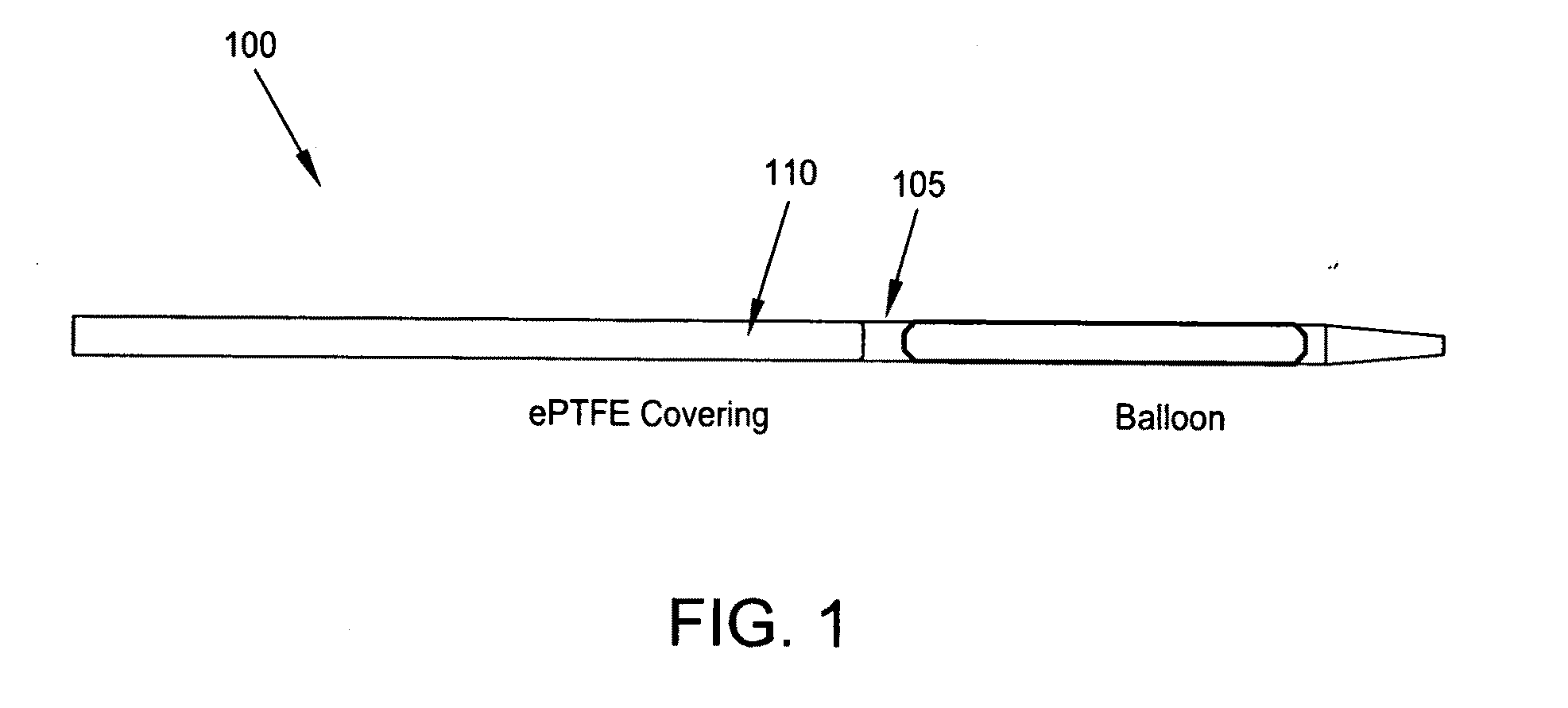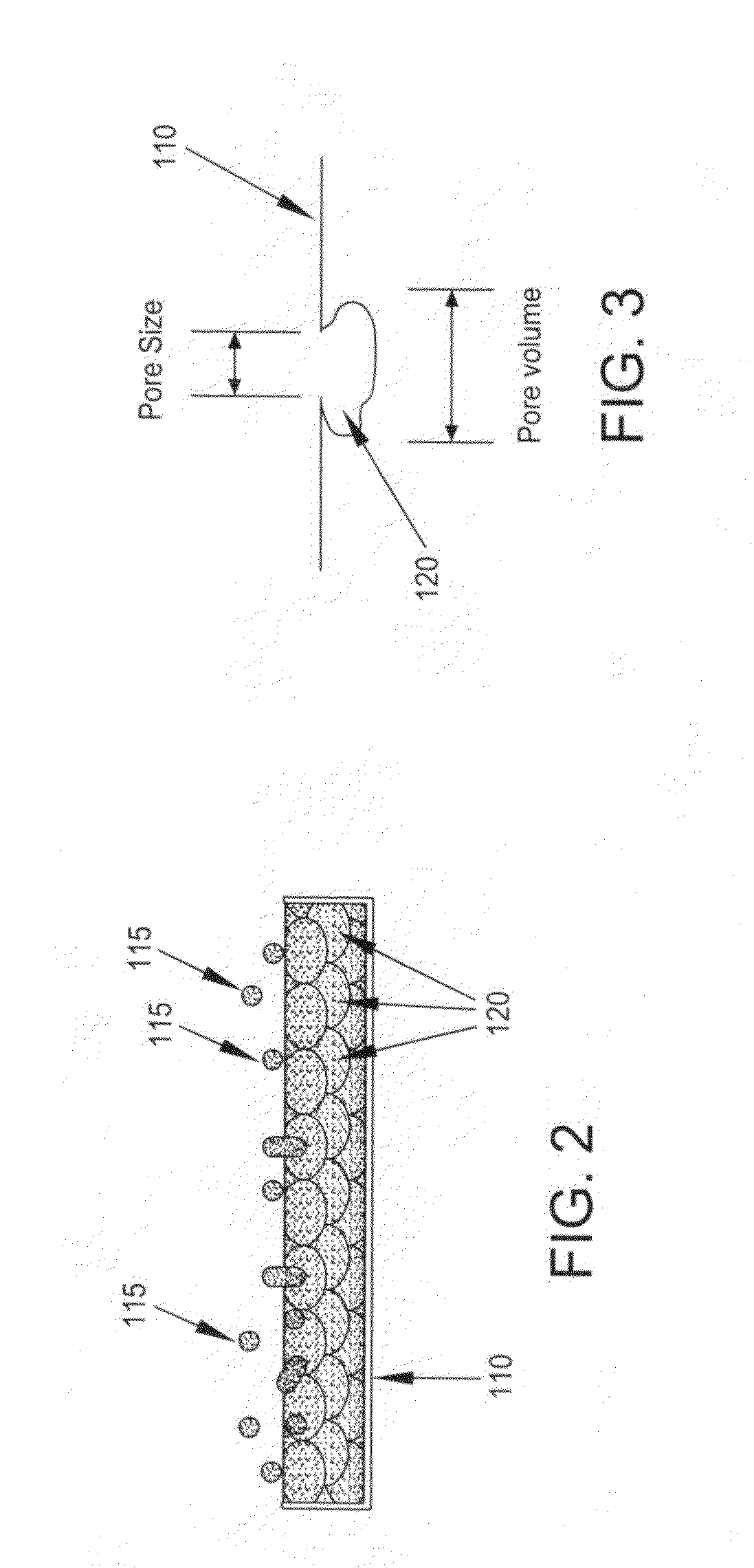Method and apparatus for delivering oxygen and/or other gases and/or pharmacological agents to tissue and medical wire for use within the body
a technology applied in the field of percutaneous delivery of oxygen and/or other gases to tissue, can solve the problems of limited flow rate, frequent clinical inacceptability of further reduction of already low flow rate, and complete obstruction of blood flow during balloon inflation, so as to prevent the formation of large, embolism-inducing pfc aggregations
- Summary
- Abstract
- Description
- Claims
- Application Information
AI Technical Summary
Benefits of technology
Problems solved by technology
Method used
Image
Examples
example 1
[0261]First, the lipophilic pharmacological agent is dissolved in alcohol (e.g., methanol). Then, the alcohol-pharmacological agent mixture is incorporated in the porous membrane by dipping or immersing the intravascular device, or, alternatively, the portion of the intravascular device incorporating the porous membrane, into the mixture of alcohol and pharmacological agent. Thereafter, the intravascular device, or the portion incorporating the porous membrane, is removed from the mixture and air-dried so as to allow the alcohol to dissipate from the porous membrane. At this point, only the lipophilic pharmacological agent remains in the pores of the porous membrane. The rate and quantity of the uptake of the lipophilic pharmacological agent into the porous membrane depends upon (i) the pore size of the porous membrane, (ii) the concentration of the pharmacological agent in the mixture, and (iii) the molecular weight of the pharmacological agent. Once the porous membrane is loaded w...
example 2
[0268]As noted above, the intravascular device may be configured to comprise structure for modifying local fluid dynamics. More particularly, the intravascular device may be surrounded with a tube or guiding catheter filled with a modulating fluid which can be used to modify local fluid dynamics.
[0269]At the target area, the fluid may be injected from the intravascular device through the surrounding tube and into the bloodstream. The injection of this modulating fluid at the site of the treated vessel changes the fluid dynamics surrounding the porous membrane and therefore increases the rate of release of the lipophilic pharmacological agent into the bloodstream.
Medical Wire
[0270]Looking next at FIG. 24, there is shown a novel medical wire 500 formed in accordance with the present invention. Novel medical wire 500 may be any type of medical wire for use in the body, where the wire should be thin and have substantial flexibility at its distal end, a lesser degree of flexibility in it...
PUM
 Login to View More
Login to View More Abstract
Description
Claims
Application Information
 Login to View More
Login to View More - R&D
- Intellectual Property
- Life Sciences
- Materials
- Tech Scout
- Unparalleled Data Quality
- Higher Quality Content
- 60% Fewer Hallucinations
Browse by: Latest US Patents, China's latest patents, Technical Efficacy Thesaurus, Application Domain, Technology Topic, Popular Technical Reports.
© 2025 PatSnap. All rights reserved.Legal|Privacy policy|Modern Slavery Act Transparency Statement|Sitemap|About US| Contact US: help@patsnap.com



